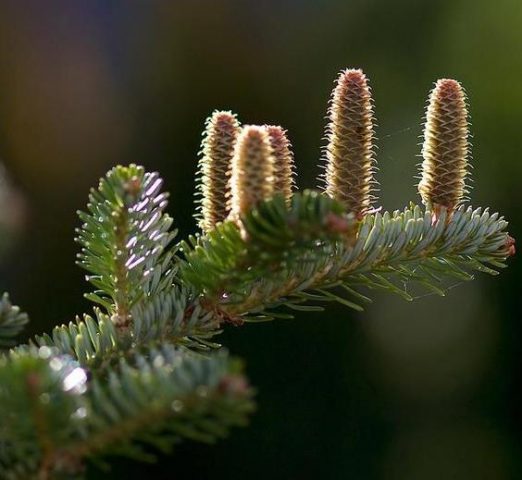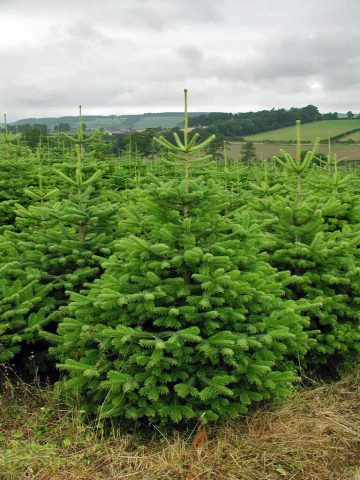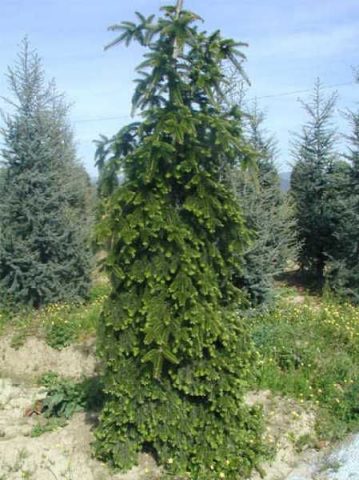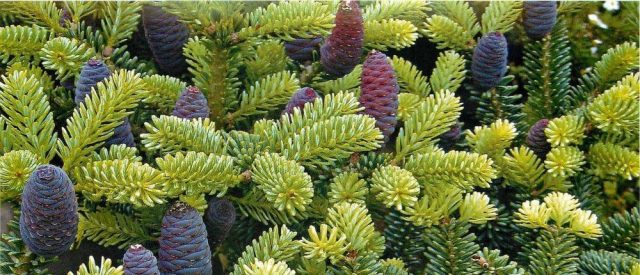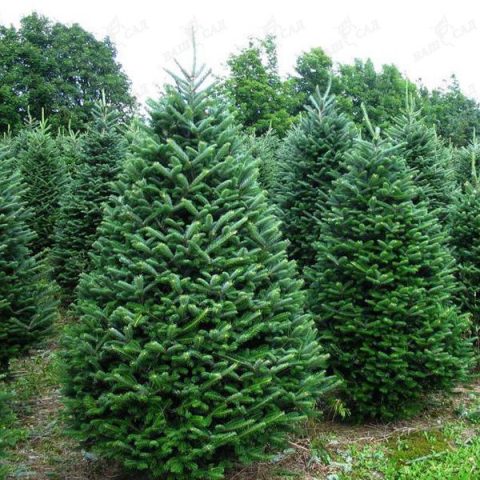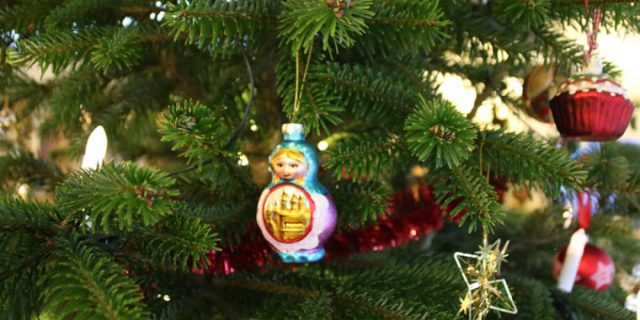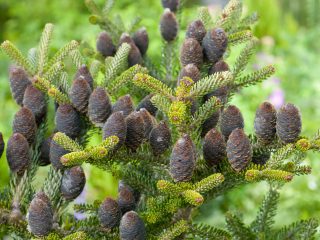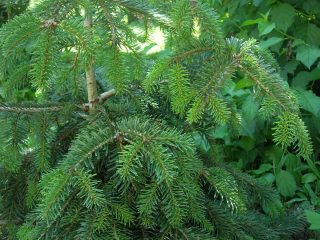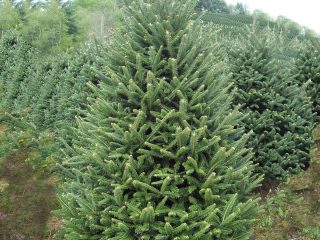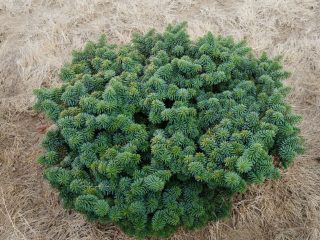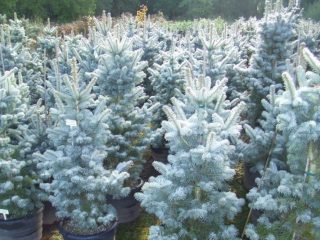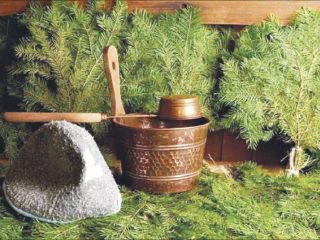Content
- 1 Description of Nordmann fir
- 2 Where does Nordmann fir grow?
- 3 Nordmann fir (Danish fir tree) in landscape design
- 4 Nordmann fir varieties
- 5 Planting and caring for Nordmann fir in open ground
- 6 How to care for a potted Nordmann fir
- 7 How long does Nordmann fir grow?
- 8 Norman fir for the New Year
- 9 Reproduction of Nordmann fir
- 10 Diseases and pests of Caucasian fir
- 11 Conclusion
- 12 Reviews of Nordmann fir
Among coniferous plants there are sometimes species that, due to their properties, become known and popular among a large number of people who are far from botany and plant growing. This is the Nordmann fir, which has several other related names. It is often called the New Year's tree or the Danish New Year's fir. Among scientists, the name Caucasian fir is common, which indicates its main habitat in nature.
Description of Nordmann fir
Thanks to its ideal crown shape, fluffy needles and some other qualities, Nordmann fir has been considered the most beautiful tree for celebrating the New Year for more than 100 years. But more on that later.After all, these trees are so noble and unique that they deserve closer attention as garden plants.
Caucasian fir (Nordmann) was first discovered in the Caucasus (Armenian Highlands) by Finnish-born Russian naturalist Alexander von Nordmann in the 1830s. In honor of its discoverer for Europeans, the tree received its specific name. Already in 1840, the seeds of Caucasian fir came from Russia to Europe, where the active introduction of these trees into culture began.
On average, the height of the Nordmann fir is 50-60 m, but individual specimens are known at the age of 700-800 years, which grow up to 80 m. It is not for nothing that it is one of the tallest trees not only in Russia, but also in the entire post-Soviet space . Trees can reach such heights due to their rapid growth rate. If in the first 10 years of life the rate of growth and development of the Caucasian fir is not very high, the tree builds up its root system and strengthens itself in the ground, then after 10 years it quickly rushes upward, not forgetting to increase the thickness of its mighty trunk. And it can reach a diameter of 2 m. True, mature trees, several hundred years old, differ in this size.
It is not for nothing that Caucasian fir trees are famous for their beauty; their crown at a young age has an ideal pyramidal shape, with branches reaching down to the ground. And even in mature trees it retains an attractive cone-shaped shape, reaching a diameter of 9-10 m.Among the characteristics of the Nordmann fir, the life expectancy of the trees also deserves considerable respect. They are distinguished by their longevity, their lifespan ranges from 600 to 900 years.
Young trees are distinguished, in addition, by their decorative appearance, with light and smooth bark. With age, it begins to become covered with cracks and becomes less attractive. Young shoots also look interesting. They have a light yellowish-brown color.
The root system of fir trees is powerful and deep, predominantly of the taproot type. Wood is characterized by the absence of a core. It is quite light, soft and elastic, and has a pinkish tint.
The brownish colored buds are not distinguished by their resinous content. They have the usual ovoid shape. The needles are very thin and at the same time flat with a blunt tip, reaching from 2 to 4 cm in length and 2-2.5 mm in width. They are located very tightly, hanging mostly down. The needles are very pleasant to the touch, soft and fluffy. The needles on top of the Nordmann fir are glossy dark green, which is clearly visible in the photo.
On the underside they have two bright white stripes in which the mouths are located. Trees breathe through them. The needles are able to stay on branches for 9 to 12 years. But if the tree is planted in a polluted or smoky area, the stomata gradually become clogged and the fir may die. Therefore, fir trees of this type are not used for urban landscaping.
When rubbed, the needles can emit a characteristic citrus aroma.
The cones grow straight upward, reaching 12-20 cm in length and about 5 cm in thickness. At the beginning of the growing season they are green in color, and when mature they become dark brown.Caucasian fir begins to flower and form seeds quite late, only after the trees reach the age of 30-60 years. By the way, at the age of 30 it often reaches a height of 10 m.
Caucasian fir blooms in April-May, and while the female flowers, cones, are easily visible, including in the photo, the male flowers, from which pollen scatters, look like small, inconspicuous spikelets of a reddish color.
Brown seeds up to 12 mm in length with a long yellowish wing, scatter from the cones in the autumn (October-November). Each cone can contain up to 400 winged seeds.
Where does Nordmann fir grow?
Caucasian fir received its second name precisely because of its natural growth area. The western slopes of the Caucasian ridge are a place where fir still forms huge tracts. It is found mainly at altitudes from 900 to 2100 m in the republics of the Russian Caucasus, as well as in the countries of Transcaucasia: Georgia, Abkhazia, Armenia, Turkey.
Mixed plantings are formed mainly with beech and oriental spruce. The climate in these areas is characterized by high rainfall, relatively mild winters and not too hot summers.
These are the conditions in Europe that are typical for the maritime climate of Denmark, where cultivated varieties of Caucasian fir have been successfully grown for more than 100 years and sold before Christmas and New Year to all European countries.
But in the conditions of central Russia, Caucasian fir may not feel the best.Therefore, in the Moscow region, growing Nordmann fir may be associated with some difficulties, which, however, are quite surmountable with a strong desire.
Nordmann fir (Danish fir tree) in landscape design
Over the past decades, coniferous trees have taken a strong place in landscape design. After all, they delight the eye with their green color all year round, and the pine aroma can purify the air and bring harmony to the nervous system.
The natural variety of Caucasian fir, due to its massive size, is more suitable for large areas as a tapeworm or for decorating gardening areas. For medium-sized areas, it is wiser to use dwarf varieties of this fir bred by breeders. They will serve as a decoration for both the rocky garden (alpine hill) and the courtyard area.
Nordmann fir varieties
Breeders have developed several artificial forms of Caucasian fir, characterized by more compact sizes and varied colors of needles.
Golden Spreader
One of the most popular varieties of Nordmann fir, which is distinguished by its tiny size and slow growth rate. In 10 years it grows only 1 m in height. And in the future it grows just as slowly. The diameter of the crown also does not exceed 1 m. In the center of the crown it has a small but pronounced notch.
The needles are also very small, up to 2 cm in length. They are golden-yellow on top and yellowish-white below. This variety of fir is good for decorating alpine slides in the southern regions of the country.
Jadwiga
A popular variety of Caucasian fir, characterized by particularly fast growth rates and dense crown. The tree is large in size when mature. The needles are very long, two-colored: green above, white below.
Pendula
A variety with a weeping crown shape that is quite demanding in terms of growing conditions. The growth rate is very slow, but the tree is capable of reaching large sizes when mature.
Borjomi
A variety that practically does not differ in external characteristics and growth rate from the natural species. But depending on the growing conditions, the cones of these trees can turn purple-violet.
Planting and caring for Nordmann fir in open ground
Caucasian fir does not require particularly careful care. You just need to understand that in a climate different from its natural growth conditions, more careful attention to the trees will be required, especially in the very first years after planting. For example, in the Moscow region, planting and caring for a Nordmann fir may take some effort and time, but it will give you something to show off to your neighbors.
Preparing seedlings and planting area
Caucasian fir is rather indifferent to light. Unlike many other conifers, it can grow well in bright sun and even in partial shade.
Since trees are characterized by a powerful root system, the planting site must be chosen at least 3 m from any buildings and other trees.
Nordmann fir tolerates almost any soil; it only does not tolerate particularly acidic soils. Loams with a neutral or slightly alkaline reaction are best suited for successful growth.
Plants do not like frequent replanting, so the location on the site must be chosen very carefully so as not to disturb the tree again.
It is best to use seedlings with an intact root ball. Even small trees with bare roots subsequently take root very poorly. A fir seedling suitable for planting must either grow in a container, or a voluminous earthen ball on its roots must be additionally wrapped in polyethylene and tightly tied to preserve its integrity. Caucasian fir seedlings aged 4-5 years are ideal for planting.
When choosing a seedling, you need to carefully examine it to check whether it is damaged by any pests or diseases.
How to plant Nordmann fir correctly
If you have a correctly selected seedling with a closed root system, planting it in open ground is carried out as follows:
- Dig a hole approximately 25% larger than the size of the seedling's root ball.
- The depth of the planting pit is made even greater in order to lay a drainage layer of crushed stone, gravel or broken brick, about 10 cm high, on the bottom.
- Prepare a planting mixture consisting of peat, sand, clay and humus in a ratio of 2:1:1:1. Add complex mineral fertilizer.
- Half of the planting mixture is placed in the hole. An earthen lump of fir seedling is carefully placed on top.
- The top and sides are covered with the remaining earthen mixture and compacted lightly.
- Then they spill water, making sure that the root collar is exactly at ground level.
After planting, the seedlings are shaded with non-woven material for better survival. It is especially important to do this in the southern regions, where the sun may be too bright already in the spring.
Watering and fertilizing
Caucasian fir is a fairly moisture-loving species, so at a young age it requires regular and abundant watering. Especially if the weather is hot and dry.In such weather, it is recommended to give the trees a shower by spraying the entire above-ground part.
Mature trees, as a rule, no longer need watering, unless there is a drought.
Young seedlings do not require fertilizing in the year of planting. And next spring, a special fertilizer for conifers in granules or Kemiru-Universal (about 100 g) is applied to each tree.
Mulching and loosening
For trees at a young age, constantly maintained soil and air moisture in the root zone is especially important. Therefore, immediately after planting the seedling, the entire space around the trunk must be mulched with a layer of at least 5-6 cm. To do this, use any organic matter: rotted sawdust, straw, peat, coniferous tree bark.
In addition to preserving moisture, mulch will protect young seedlings from the growth of weeds that can destroy young fir shoots.
Every year in spring the layer of mulch must be renewed.
Trimming
Caucasian fir itself is capable of forming a thick and beautiful crown, so it does not need formative pruning.
In early spring, before the buds emerge, sanitary pruning is carried out - dry and damaged shoots are removed.
And it is recommended to prune frozen branches only at the end of May, when the likelihood of the last spring frosts has gone.
Preparing for winter
Despite the fact that the winter hardiness of the Nordmann fir root system is quite high (it can withstand frosts down to - 30 ° C), its young shoots can also suffer at temperatures below - 15-20 ° C. Therefore, it needs to cover the branches with spruce branches or special non-woven protective material during the winter period and the moment of possible spring frosts.Also, in the conditions of the middle zone, it is recommended to cover the trunk circles of Nordmann fir with an additional layer of mulch, up to 10 cm high.
How to care for a potted Nordmann fir
Most often, Caucasian fir can be purchased not as a seedling for planting in open ground, but as a small decorative tree in a pot for decoration for the New Year. Many people use this to avoid buying a Christmas tree every year, but to grow it at home.
Caring for Nordmann fir in an apartment means, first of all, keeping it in the coolest and most humid conditions possible. Under no circumstances should the tree be placed near heating units. Watering should be regular, so that the soil is moist all year round. It is advisable to spray the needles daily or place a humidifier nearby.
If the house has a balcony or glazed loggia, then it is better if the tree will spend the winter there. Only the container needs to be additionally insulated with foam plastic or other heat-insulating material.
How long does Nordmann fir grow?
But it is necessary to understand that Nordmann fir is still an outdoor plant and it will not be able to live and develop normally in an apartment indefinitely. Under the most ideal care conditions, she can survive at home for no more than 3-4 years. At the same time, it will need annual replanting, since during this period the root system develops much more intensively than the above-ground part. But then its size will still force it to be transplanted outside, otherwise the tree will simply dry out and die.
Norman fir for the New Year
Even more often, Nordmann fir is sold before the New Year or Christmas in the form of a cut tree in special stores or at Christmas tree markets. Thanks to its luxurious appearance, it became very popular. And many, calling it Norman fir in their reviews, do not even suspect that under natural conditions this tree grows in Russia.
How to preserve Nordmann fir for the New Year
These trees are much better suited for home decoration for the New Year than spruce or pine trees. There are several reasons for this:
- have an almost ideal cone shape with dense foliage;
- the needles have a rich green color, are soft and do not prick at all;
- They can delight you with green and fresh pine needles in a room for up to several months.
In order for the Nordmann fir to stand longer and please the eye with its green and fluffy appearance, it is advisable to follow the following rules:
- Trees are purchased at street markets, where the air temperature allows them to be preserved for a longer time.
- Place the tree trunk in a bucket of water or wet sand, adding a few tablespoons of glycerin, which can be bought at any pharmacy, to the water.
- Do not use paper toys to decorate fir, since for longer preservation it is advisable to spray it every day with a spray bottle.
How long does it take for Nordmann fir to fall off?
After cutting, Nordmann fir needles can remain green for up to 10 weeks. But since no one knows exactly when it was cut down, in any case there is only about a month to two left. This is a long time. Almost no coniferous tree retains its needles for so long.
Does Nordmann fir smell?
The needles of the natural type of Caucasian fir are very fragrant and can fill the house with the smell of a coniferous forest for a long time.But specimens of cultivated varieties of this fir grown abroad do not smell at all, although they look magical. But they are usually sold everywhere before the New Year in most shopping centers.
So, if you want to get Nordmann fir with the smell of a real coniferous forest, you will have to go to a specialized Russian nursery to get it.
Reproduction of Nordmann fir
Almost the only way to propagate Caucasian fir is by seed, since its cuttings take root with great difficulty and only when special conditions are created.
Before sowing seeds, stratification is required in a cold place for 1-2 months. Stratified seeds germinate in the light at moderate humidity and temperatures within + 18-23 ° C for 3-4 weeks.
Diseases and pests of Caucasian fir
Nordmann fir has very good natural immunity, so pests and diseases mostly avoid it. Sometimes damage from fir aphids or moths is observed. In this case, urgent treatment with any insecticide is necessary.
If there is excessive waterlogging, fir can be affected by fungal diseases. Therefore, it is advisable to carry out prevention - periodically watering with a biofungicide-phytosporin.
Conclusion
Nordmann fir is a stunningly beautiful coniferous tree, which many know and love as a “New Year tree.” But it’s worth trying to plant this beauty on the site. If you put in more or less effort depending on the region, the tree will serve as a decoration for the site for many years and will be inherited by children and grandchildren.
Reviews of Nordmann fir


